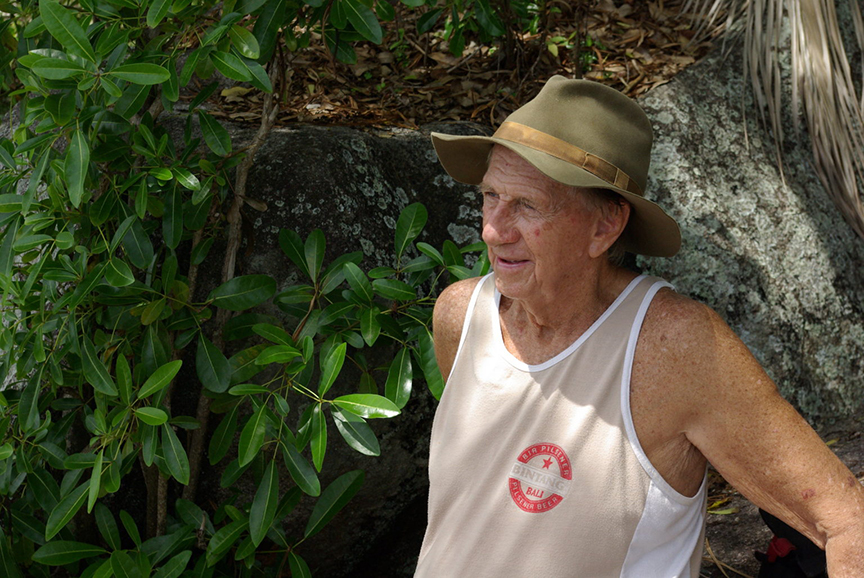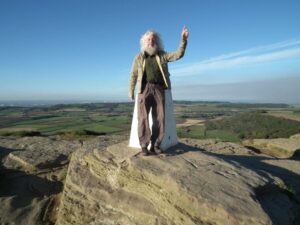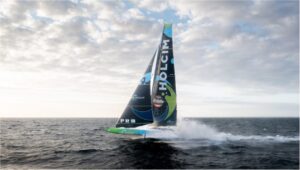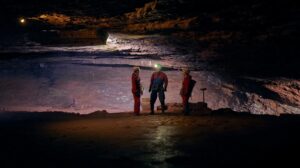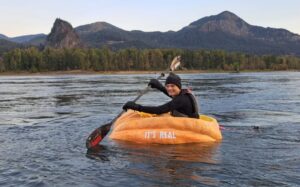In 1962, Brendon Grimshaw did something many of us only dream of: He bought a tropical island. Moyenne Island lays 4.5km off the north coast of Mahé, the largest of the 115-island Seychelle archipelago. Uninhabited, overgrown, and with legends of pirate treasure, Grimshaw fell in love with the tiny island the moment he set foot on it. It is just 400m long by 300m wide.
Originally from the UK, Grimshaw was working as a newspaper editor in Kenya. Tanzania had just declared independence and Kenya was about to follow. He figured that his job would pass to someone local. At 37, he began considering what to do next. He wanted a life closer to nature and dreamed of owning land in the Seychelles.

Rene Antoine Lafortune and Brendon Grimshaw. Photo: Grimshaw Origins and History
A chance offer
Under the guise of a holiday, Grimshaw went to Seychelles to see if there was any way his dream could become reality. After a few weeks, he started to wonder if he had to rethink his plans. Even in the early 1960s, the prices of the few islands for sale were not for the faint of wallet.
Then just before he left for home, a young man in the street providentially asked if he was interested in buying an island. Later that day, they visited Moyenne Island. “It was totally different,” he said many years later. “It was a special feeling. This is the place I’d been looking for.”
So for about $10,000, Moyenne Island became his. If he thought buying an island was difficult, it was nothing compared with what came next.
Moyenne Island harbored a tiny rainforest so dense that falling coconuts didn’t hit the ground. it was impossible to walk across. The island had suffered from neglect. Weeds choked the native plants, and rats scampering through the undergrowth were about the only wildlife.

The work begins
Grimshaw enlisted the help of a local man, Rene Antoine Lafortune. Together, in a lifelong project, the pair set out to restore the island to be what Seychelles had been before tourism and development. They cut paths through the forest, cleared scrub, and began to plant native trees and plants. Planting became an obsession. Today, Moyenne has over 16,000 trees.
Grimshaw then turned to the next problem: the lack of native fauna. There were no birds, so he brought 10 over from a neighboring island, to which they swiftly flew back. He did the same thing again and thought he got the same result. But then a few birds returned.
Grimshaw and Lafortune began feeding those first avian residents. Slowly, more settled on the island. As the new trees grew and produced fruit, more birds came. Now 2,000 birds live on this little slice of paradise.
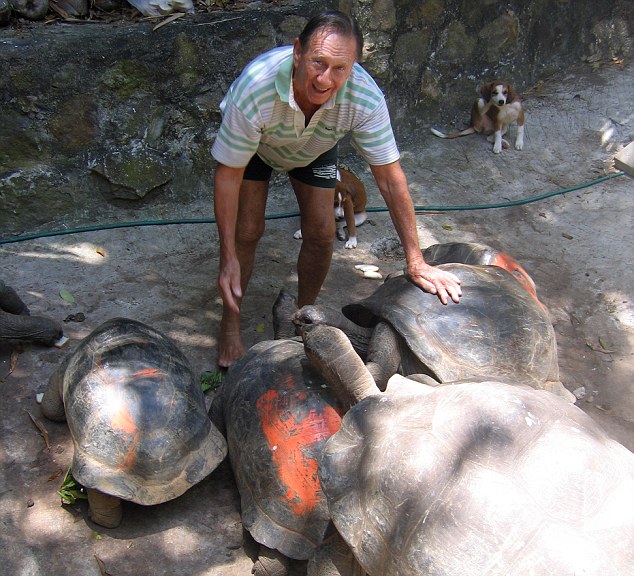
Brendon Grimshaw introduced giant tortoises to the island. Photo: Grimshaw Origins and History
Reptilian ‘cat lady’
Grimshaw introduced one more animal to his island, the giant Aldabra tortoise. After transporting a number of tortoises to the island, he painstakingly cared for them. The species is native to Seychelles but had become locally extinct on many of the islands.
A poster boy for conservationists, Grimshaw painted numbers on their shells so that he could identify them. He then set up a breeding program.
“The babies are kept in my bedroom,” he told the Financial Times in 2008. “If you let them go, you’ll never see them again.”
For these efforts, he was once aptly described as “the reptilian version of a cat lady”. Moyenne Island now has approximately 50 tortoises.
Grimshaw moved to the island permanently in 1972. Over time, he had water, electricity, and a phone line set up. Many thought that this was the start of the island becoming yet another tourist destination.

Moyenne Island. Photo: Shutterstock
Turned down a $50 million offer
But that underestimated Grimshaw. He never wanted his island to become a resort. He wanted it to turn it into a nature preserve. Before his death in 2012, he turned down multiple offers to buy the island. Once, a Saudi prince reportedly offered him $50 million for it.
Grimshaw lived on the island for the rest of his life, but he was not always alone. When his mother died in 1981, he invited his father to come and live with him. He was both thrilled and surprised when his 88-year-old dad agreed.
“We had a wonderful time together and became the best of friends,” Grimshaw said. His father died five years later and was buried on the island, next to the grave that Grimshaw had already dug for himself.

Rene Antoine Lafortune and Brendon Grimshaw. Photo: Daily Mirror
Even after his father passed away, Grimshaw was not alone. Lafortune also stayed on the island. He brought a few stray dogs back to the island, and they allowed day-trippers to visit from Mahé for a small fee. With no jetty, visitors had to wade onto the island’s white sands, where Grimshaw met them. In 2010, a film crew also visited the island to make a documentary, below, about Grimshaw and the work he had done.
World’s smallest national park
In 2007, Lafortune passed away. Grimshaw, now 81, knew that he too had limited time left. Unmarried and with no children, he had no one to take on the custodianship of the island. He set up a perpetual trust and signed an agreement with Seychelles’ Ministry of Environment. His island became Moyenne Island National Park, the world’s smallest national park.
When Grimshaw died in 2012, he was buried next to his father. As requested, his tombstone reads, “Moyenne taught him to open his eyes to the beauty around him and say thank you to God.”
